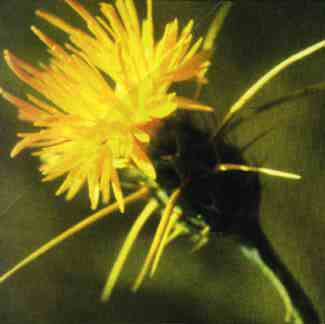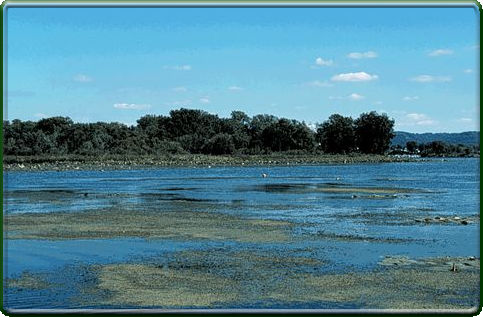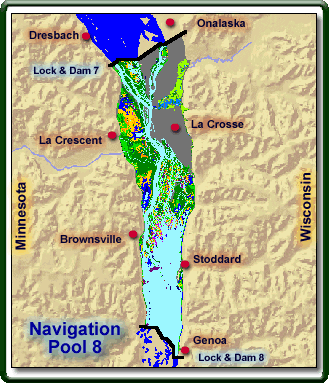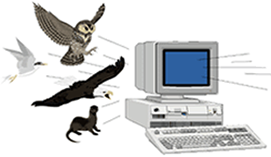- Home
- About S&T
- Taxa/Organisms
- Ecosystems
- Issues
- Methods & Tools
- Reports & Publications
- Location
- Search
Publisher: USGS | Science Center: Southwest Biological Science Center (SBSC, Flagstaff) | Format: URL
sbsc.wr.usgs.gov — From the website: "The Southwest Exotic Plant Information Clearinghouse is a cooperative effort among the U.S. Geological Survey, the National Park Service and Northern Arizona University to organize comprehensive information on exotic plant species in the southwest on one web location. SWEPIC serves to help all people and organizations committed More...

Publisher: USGS | Science Center: Western Ecological Research Center (WERC, Sacramento) | Format: URL
www.werc.usgs.gov — Radio transmitters, passively induce transponder (PIT) tags, visual surveys, and other methods and techniques are being evaluated to determine the habitat use and life history characteristics of the giant garter snake (Thamnophis gigas), a species endemic to Central Valley wetlands and federally listed as threatened.

Publisher: USGS | Science Center: Upper Midwest Environmental Sciences Center (UMESC, LaCrosse) | Format: URL
www.umesc.usgs.gov — After a series of navigation dams were constructed in the Upper Mississippi and Illinois Rivers in the 1930s, aquatic vegetation flourished. Its distribution, however, has fluctuated drastically in the 1980s and 1990s. As the navigation system ages, the fate of this important ecosystem component is a growing concern. This issue overview's More...

Publisher: California Information Node | Format: URL
cain.nbii.gov — The California Information Node provides access to data and information about California's environment. Among the topics covered are: invasive species, resource management, conservation, restoration, plants, animals, watersheds and policies. Images, maps and spatial data are also provided. Links to biological issues, biological disciplines, More...

Publisher: USGS | Science Center: Upper Midwest Environmental Sciences Center (UMESC, LaCrosse) | Format: URL
www.umesc.usgs.gov — The diversity of habitat types, plants, and animals in the Upper Mississippi River has declined considerably over the last 50 years, creating loss of aquatic vegetation, loss of islands and side channels behind dams, and changes in river sediments, potentially caused by the method of managing water levels, which maintains artificially high water More...

Publisher: USGS | Science Center: Patuxent Wildlife Research Center (PWRC, Laurel) | Format: URL
www.pwrc.usgs.gov — Written summaries of biological characteristics and contaminant exposure and effects data for 38 coastal and estuarine terrestrial vertebrates are available. Species were selected based on their previous use in contaminant monitoring, their status as valued natural resources, or as representatives of taxonomic groups. Characterizations were More...

Publisher: USGS | Science Center: Western Ecological Research Center (WERC, Sacramento) | Format: URL
www.werc.usgs.gov — This web resource addresses the positive relationship between cheatgrass (Bromus tectorum) and fire frequency as a major concern for land managers in semi-arid shrublands throughout western North America, particularly in Great Basin sagebrush steppe. Management tools are needed to break this cycle, and in this project we will evaluate the use of More...

Publisher: NBII | Format: URL
www.nbii.gov — Natural resource managers face complex decisions that require a clear understanding of the status of wildlife populations and their habitats. Monitoring is key to making effective management decisions and evaluating the outcomes of those decisions. The goal of NRMP is to improve the accessibility of monitoring efforts to resource managers to aid More...

Publisher: USGS | Science Center: Fort Collins Science Center (FORT, Ft. Collins) | Format: URL
www.fort.usgs.gov — Natural Resource Monitoring Partnership (NRMP) is a collaborative effort by the natural resource management community to improve monitoring efforts in order to support effective evaluation and decision-making by sharing information on monitoring projects and protocols. The Natural Resource Monitoring Partnership was built for easy access to More...
